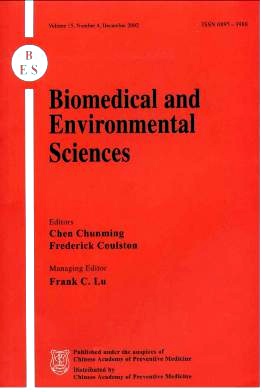Oxidative Stress in Patients With Acute Coxsackie Virus Myocarditis
-
Key words:
- Oxidative stress /
- Coxsackie virus /
- Myocarditis /
- Nitric oxide /
- Antioxidants /
- Antioxidases /
- Lipid peroxide /
- Free radicals
Abstract: To study the state of oxidative stress in patients with acute coxsackie virus myocarditis (ACM), and to investigate the pathological chain reactions of a series of free radicals and oxidative and lipoperoxidative damages in their bodies. Methods Eighty ACM patients and 80 healthy adult volunteers (HAV) were enrolled in a case-control study, in which concentrations of nitric oxide (NO) in plasma, lipoperoxides (LPO) in plasma and LPO in erythrocytes (RBC), vitamin C (VC), vitamin E (VE) and β-carotene (β-CAR) in plasma as well as activities of superoxide dismutase (SOD), catalase (CAT) and glutathione peroxidase (GSH-Px) in RBC were determined by using spectrophotometric assays. Results Compared with the average values (AV) of the above biochemical parameters (BP) in the HAV group, the AV of NO in plasma, and LPO in plasma and RBC in the ACM group were significantly increased (P=0.0001), while the AV of VC, VE, β-CAR, SOD, CAT and GSH-Px in the ACM group were significantly decreased (P=0.0001). The values of the above BP were used to estimate the relative risk ratio (RR) between the ACM group and the HAY group; the RR and its 95 % confidence interval were 12.467 (5.745~27.051), 4.333(2.126~8.834), 6.517 (3.225~13.618), 3.310 (1.598~6.858), 31.000 (12.611~76.201),4.663 (2.228~9.759), 11.769 (5.440~25.462), 3.043 (1.486~6.229) and 6.594 (3.045~14.281)respectively, and their P levels ranged from 0.002 to 0.0001. The results were asfollows: D = 22.143 - 0.017SOD + 0.008NO + 0.244LPO in RBC, Eigenvalue = 13.659,Canonical correlation = 0.965, Wilks' λ = 0.068, χ2 = 420.212, P = 0.0001. The correct rate of discrimination to the ACM group and to the HAV group was 87.5% and 95.0 %, respectively,and 91.3 % of originally grouped cases was correctly classified. Conclusion The findings in this study suggested that the oxidative stress in bodies of ACM patients was severely aggravated, and marked high oxidative constituents and low antioxidants and antioxidases in the human body might increase the relative risk of inducing acute coxsackie virus myocarditis, and measuring the values of NO in plasma, SOD and LPO in RBC might increase the correct rates of discriminatory analysis of the ACM.
| Citation: | XIE Bo, ZHOU JUN-FU, LU Qun, LI Chong-jian, CHEN PENG. Oxidative Stress in Patients With Acute Coxsackie Virus Myocarditis[J]. Biomedical and Environmental Sciences, 2002, 15(1): 48-57. |







 Quick Links
Quick Links
 DownLoad:
DownLoad: